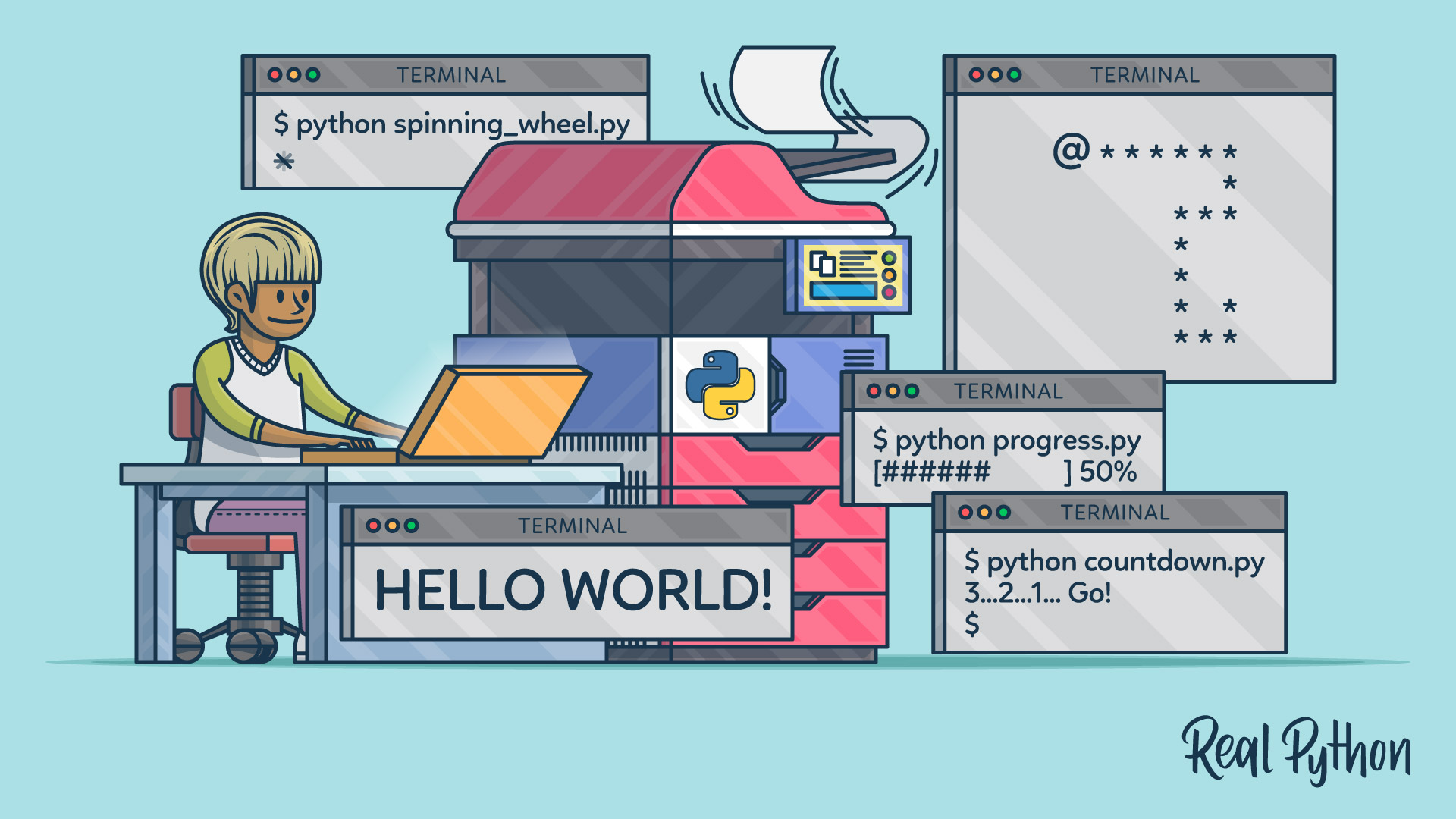
Thread-Safe Printing
Thread-Safe Printing 관련
I briefly touched upon the thread safety issue before, recommending logging over the print() function. If you’re still reading this, then you must be comfortable with the concept of threads.
Thread safety means that a piece of code can be safely shared between multiple threads of execution. The simplest strategy for ensuring thread-safety is by sharing immutable objects only. If threads can’t modify an object’s state, then there’s no risk of breaking its consistency.
Another method takes advantage of local memory, which makes each thread receive its own copy of the same object. That way, other threads can’t see the changes made to it in the current thread.
But that doesn’t solve the problem, does it? You often want your threads to cooperate by being able to mutate a shared resource. The most common way of synchronizing concurrent access to such a resource is by locking it. This gives exclusive write access to one or sometimes a few threads at a time.
However, locking is expensive and reduces concurrent throughput, so other means for controlling access have been invented, such as atomic variables or the compare-and-swap algorithm.
Printing isn’t thread-safe in Python. The print() function holds a reference to the standard output, which is a shared global variable. In theory, because there’s no locking, a context switch could happen during a call to sys.stdout.write(), intertwining bits of text from multiple print() calls.
Note
A context switch means that one thread halts its execution, either voluntarily or not, so that another one can take over. This might happen at any moment, even in the middle of a function call.
In practice, however, that doesn’t happen. No matter how hard you try, writing to the standard output seems to be atomic. The only problem that you may sometimes observe is with messed up line breaks:
[Thread-3 A][Thread-2 A][Thread-1 A]
[Thread-3 B][Thread-1 B]
[Thread-1 C][Thread-3 C]
[Thread-2 B]
[Thread-2 C]
To simulate this, you can increase the likelihood of a context switch by making the underlying .write() method go to sleep for a random amount of time. How? By mocking it, which you already know about from an earlier section:
import sys
from time import sleep
from random import random
from threading import current_thread, Thread
from unittest.mock import patch
write = sys.stdout.write
def slow_write(text):
sleep(random())
write(text)
def task():
thread_name = current_thread().name
for letter in 'ABC':
print(f'[{thread_name} {letter}]')
with patch('sys.stdout') as mock_stdout:
mock_stdout.write = slow_write
for _ in range(3):
Thread(target=task).start()
First, you need to store the original .write() method in a variable, which you’ll delegate to later. Then you provide your fake implementation, which will take up to one second to execute. Each thread will make a few print() calls with its name and a letter: A, B, and C.
If you read the mocking section before, then you may already have an idea of why printing misbehaves like that. Nonetheless, to make it crystal clear, you can capture values fed into your slow_write() function. You’ll notice that you get a slightly different sequence each time:
[
'[Thread-3 A]',
'[Thread-2 A]',
'[Thread-1 A]',
'\n',
'\n',
'[Thread-3 B]',
(...)
]
Even though sys.stdout.write() itself is an atomic operation, a single call to the print() function can yield more than one write. For example, line breaks are written separately from the rest of the text, and context switching takes place between those writes.
Note
The atomic nature of the standard output in Python is a byproduct of the Global Interpreter Lock, which applies locking around bytecode instructions. Be aware, however, that many interpreter flavors don’t have the GIL, where multi-threaded printing requires explicit locking.
You can make the newline character become an integral part of the message by handling it manually:
print(f'[{thread_name} {letter}]\n', end='')
This will fix the output:
[Thread-2 A]
[Thread-1 A]
[Thread-3 A]
[Thread-1 B]
[Thread-3 B]
[Thread-2 B]
[Thread-1 C]
[Thread-2 C]
[Thread-3 C]
Notice, however, that the print() function still keeps making a separate call for the empty suffix, which translates to useless sys.stdout.write('') instruction:
[
'[Thread-2 A]\n',
'[Thread-1 A]\n',
'[Thread-3 A]\n',
'',
'',
'',
'[Thread-1 B]\n',
(...)
]
A truly thread-safe version of the print() function could look like this:
import threading
lock = threading.Lock()
def thread_safe_print(*args, **kwargs):
with lock:
print(*args, **kwargs)
You can put that function in a module and import it elsewhere:
from thread_safe_print import thread_safe_print
def task():
thread_name = current_thread().name
for letter in 'ABC':
thread_safe_print(f'[{thread_name} {letter}]')
Now, despite making two writes per each print() request, only one thread is allowed to interact with the stream, while the rest must wait:
[
# Lock acquired by Thread-3
'[Thread-3 A]',
'\n',
# Lock released by Thread-3
# Lock acquired by Thread-1
'[Thread-1 B]',
'\n',
# Lock released by Thread-1
(...)
]
I added comments to indicate how the lock is limiting access to the shared resource.
Note
Even in single-threaded code, you might get caught up in a similar situation. Specifically, when you’re printing to the standard output and the standard error streams at the same time. Unless you redirect one or both of them to separate files, they’ll both share a single terminal window.
Conversely, the logging module is thread-safe by design, which is reflected by its ability to display thread names in the formatted message:
import logging
logging.basicConfig(format='%(threadName)s %(message)s')
logging.error('hello')
#
# MainThread hello
It’s another reason why you might not want to use the print() function all the time.